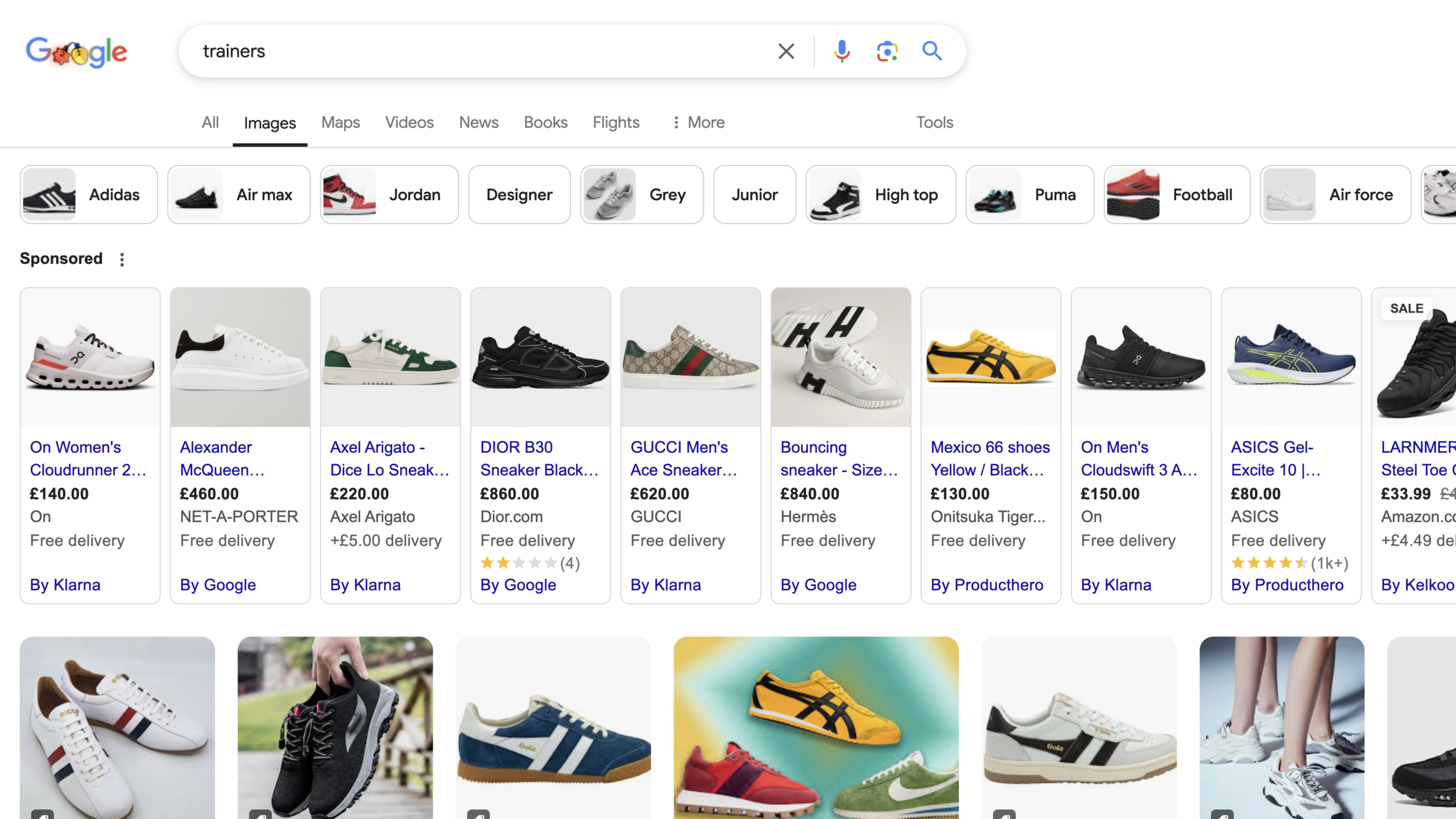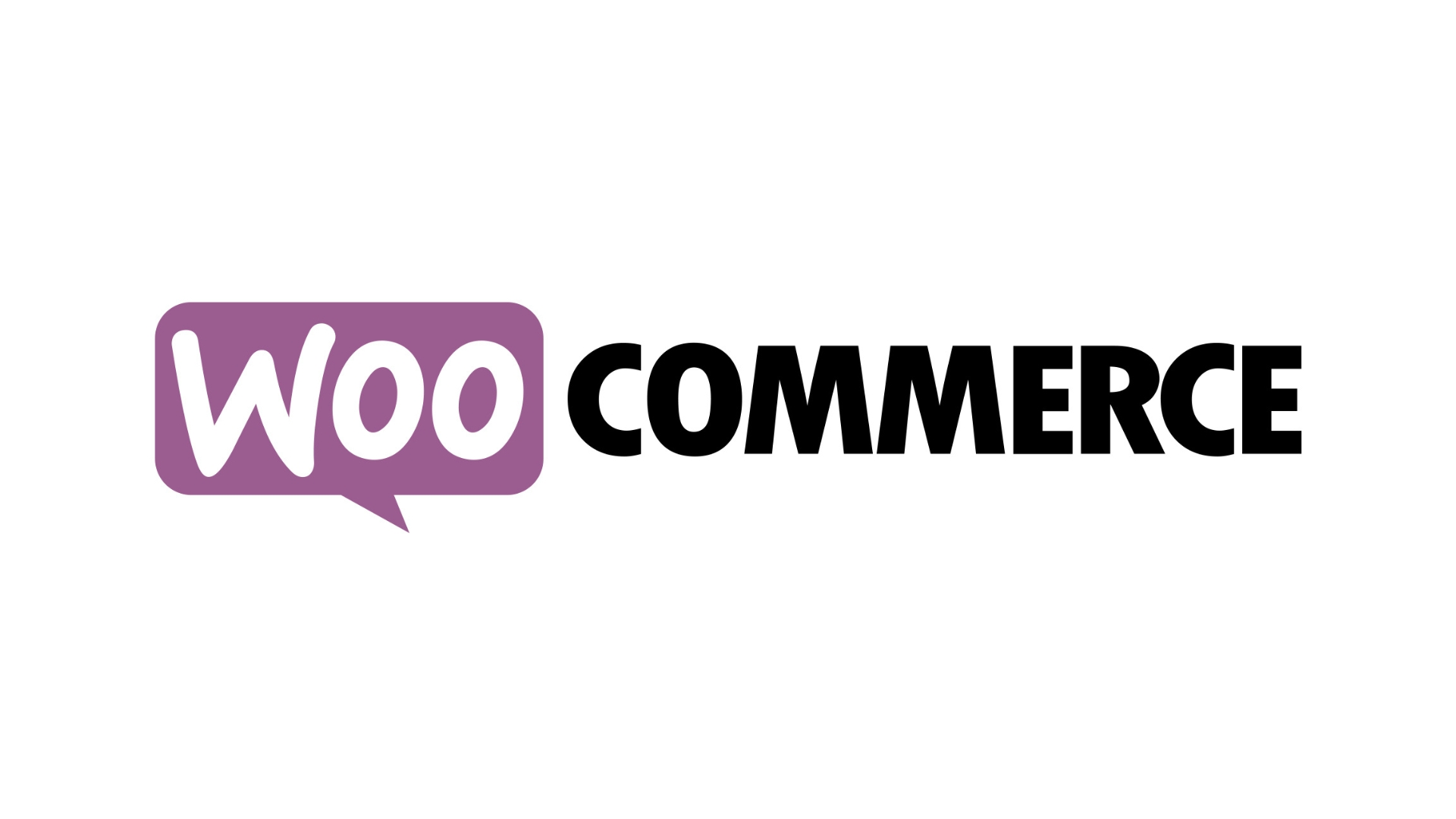This article will explore vital elements of effective ecommerce website design, key optimisation techniques, and best practices for boosting conversion rates. By reading this content, readers will gain insights on overcoming common challenges and utilising data-driven insights, thus improving their website’s performance and user satisfaction, aligning perfectly with their branding services.
Understand the Importance of User Experience in Ecommerce

Trends influencing ecommerce user experience include evolving design elements and the integration of intuitive navigation systems. Understanding the relationship between user experience and conversion rates is essential for effective website development, particularly in platforms like WooCommerce. Key metrics for measuring user experience encompass aspects such as branding services, colour choices, and payment processes, providing actionable insights for optimisation strategies.
Trends Influencing Ecommerce User Experience
The landscape of ecommerce is rapidly changing, and understanding the latest trends is vital for enhancing user experience. The rise of mobile devices has prompted businesses to optimise their ecommerce stores for smaller screens with branding services. Ensuring that websites are responsive and visually appealing on mobile can significantly impact customer engagement and conversion rates through ppc services.
Another crucial trend shaping user experience is the integration of social proof elements. Displaying customer reviews and testimonials on an ecommerce store can build trust and credibility among potential buyers. This not only influences purchasing decisions but also creates a more informed shopper who feels confident in their choices, leveraging social knowledge to drive sales.
Additionally, the implementation of lazy loading techniques has become increasingly important in ecommerce site design. This strategy allows images and content to load only as users scroll down the page, enhancing website speed and performance. Reducing load time contributes to a smoother browsing experience, addressing common pain points for online shoppers and encouraging them to explore the site further.
The Relationship Between User Experience and Conversion Rates
The correlation between user experience and conversion rates is significant, highlighting the necessity for effective website optimisation strategies. For instance, streamlined navigation plays a crucial role—when users can easily find products, they are more likely to complete a purchase. Including trusted payment options, such as Amazon Pay, enhances the checkout process, further reducing cart abandonment and increasing overall sales.
Proper link building is another essential aspect that can enhance user experience, allowing users to find relevant content quickly and effortlessly. Websites that employ keyword research to optimise their content not only improve visibility in search results but also create a more navigable site structure. This directly contributes to a user-friendly environment that fosters higher engagement and conversion rates.
Offering features like gift card options can significantly influence user satisfaction and conversion. Customers appreciate flexibility and convenience, which these options provide during the purchasing process. By prioritising strategies that enhance user experience, businesses can directly impact their conversion rates and foster long-term customer loyalty.
Key Metrics for Measuring User Experience
Measuring user experience in ecommerce contexts, particularly for Shopify stores, involves key metrics that can reveal insights into customer engagement and site performance. Common analytics tools can track metrics such as bounce rates, page load times, and session duration, all of which contribute to understanding how users interact with an online platform. This analytical approach allows businesses to pinpoint areas needing improvement, thereby enhancing the overall shopping experience.
A vital aspect of assessing user experience is analysing conversion rates after implementing changes based on data gathered from user interactions. For example, if a company observes an increase in conversion rates after optimising its point of sale features, it can deduce the importance of an efficient checkout process. High conversion rates indicate that customers find the site credible and user-friendly, which ultimately encourages repeat purchases.
Customer feedback serves as another crucial metric for measuring user experience. Online reviews and ratings can provide valuable insights into user satisfaction, highlighting what aspects of the shopping journey resonate most with customers. This feedback not only bolsters a store’s credibility but can also guide strategic decisions to enhance user experience, driving further improvements in ecommerce performance.
Identify Core Elements of Effective Ecommerce Website Design

Creating visually appealing layouts is paramount for effective ecommerce website design, as it captures user attention while promoting products through merchandising techniques. Ensuring seamless navigation allows users to find what they need effortlessly, directly impacting their shopping experience. Additionally, utilising high-quality product images and detailed descriptions can enhance engagement, supporting advertising campaigns by communicating value clearly. Each of these elements plays a vital role in optimising user experience in an ecommerce context.
Creating Visually Appealing Layouts
Creating visually appealing layouts is essential for ecommerce websites as it directly influences user engagement and retention. A well-designed site prioritises readability, ensuring that customers can navigate effortlessly through product offerings. Using a clear hierarchy of information, combined with attractive visual elements, promotes an enjoyable shopping experience that encourages customers to explore further.
Incorporating high-quality images and concise product descriptions enhances the visual appeal of an ecommerce site. This aspect not only captures visitors’ attention but also helps them make informed purchase decisions, ultimately contributing to conversion rate optimisation. Setting clear call-to-action buttons that stand out within the layout further guides users toward specific actions, such as adding items to their cart or signing up for email newsletters.
Moreover, a cohesive design that reflects the brand’s identity can strengthen customer trust and loyalty. When businesses align their marketing strategy with a visually appealing website, it builds a memorable shopping experience. Customers are more likely to return to a site that engages them visually, thus enhancing overall conversion rates while fostering a sense of connection with the brand.
Ensuring Seamless Navigation
Ensuring seamless navigation is critical for ecommerce websites, as it allows customers to find products quickly and efficiently. A well-structured site layout should cater to the target market by logically grouping products and categories, making it easier for users to browse through inventory. Implementing intuitive design elements, such as dropdown menus or breadcrumb links, guides users smoothly through the shopping journey, enhancing overall satisfaction.
Web analytics play a vital role in understanding user behaviour and pinpointing areas where navigation may be lacking. By analysing data on how customers interact with the site, businesses can identify pain points, such as high bounce rates on certain pages. Adjustments based on these insights, such as improving the placement of key products or simplifying categories, can lead to significantly increased customer lifetime value through improved user experience.
Incorporating features like drag and drop functionality for product arrangement can streamline the shopping process, making it more user-friendly. When users find it easy to navigate and manage their selections, they are more likely to complete purchases. Integrating inventory management software ensures that real-time stock updates reflect on the site, allowing for a smooth shopping experience and fostering trust with customers, encouraging repeat visits and sales.
Utilising High-Quality Product Images and Descriptions
Utilising high-quality product images is vital for any ecommerce website, as they significantly influence user behaviour. Clear, detailed visuals enable customers to assess products effectively, leading to more informed purchasing decisions. By ensuring images load swiftly and are optimised for various devices, businesses can create a seamless browsing experience that keeps potential buyers engaged.
Accompanying product images with well-crafted descriptions further enhances user experience and facilitates learning about features and benefits. Descriptions should be concise yet informative, highlighting key attributes that resonate with target audiences. Incorporating elements of personalisation in these descriptions, such as tailored recommendations based on previous browsing behaviour, can increase relevancy and drive conversion rates.
Moreover, clear calls to action incorporated within the images and descriptions can guide users through the purchasing process on the website. This structure helps eliminate confusion and encourages users to take the next step, whether it is adding a product to the cart or exploring related items. By focusing on effective visual and textual presentation, businesses can foster a more engaging shopping environment that ultimately boosts sales.
Implement Essential Ecommerce Website Optimisation Techniques
Optimising an ecommerce web platform involves several key strategies that significantly impact user experience. Improving page load speeds not only enhances customer engagement but also reduces bounce rates. Streamlining the checkout process can minimise cart abandonment, facilitating a smoother purchase funnel. Additionally, leveraging personalisation boosts user interactions, while integrating a mobile-optimised design caters to the increasing percentage of shoppers using mobile devices. Each of these techniques contributes to a more effective ecommerce environment, ultimately enhancing sales through improved social media marketing efforts.
Improving Page Load Speeds for Better Engagement
Improving page load speeds serves as a crucial aspect of ecommerce website optimisation, especially as a large portion of users browse using smartphones. A site that loads promptly keeps visitors engaged, reducing bounce rates significantly. Businesses that focus on fast loading times effectively enhance their value proposition, showing users that they prioritise both their time and experience.
From a development perspective, optimising images and employing efficient coding practices can greatly enhance website speed. For example, compressing images without sacrificing quality can lead to faster load times, ensuring that potential customers remain engaged while exploring products. Investing in quality search engine optimisation techniques, such as minimising server response time, can further contribute to enhanced user experience and improved search rankings.
Ultimately, slower websites can lead to cart abandonment, which is detrimental to a business’s bottom line. By understanding the impact of load speed on user behaviour, companies can make informed decisions about where to invest resources for improvement. Maintaining fast page loading becomes essential for fostering a satisfactory shopping environment that encourages repeat visits and boosts conversions.
Streamlining the Checkout Process to Reduce Abandonment
Streamlining the checkout process is vital for reducing abandonment rates in online stores. A lengthy or complicated checkout can frustrate users, leading to lost sales. Implementing a simplified web development approach, such as enabling guest checkout and minimising form fields, fosters a quicker and more efficient purchasing experience, which can positively impact conversion rates.
Incorporating familiar and trusted logos during the checkout phase can also enhance user confidence. Displaying recognised payment options, as well as security badges, establishes credibility and reassures customers that their financial information is safe. This strategy not only boosts trust but also encourages users to complete their transactions rather than second-guessing their decisions.
Utilising tools like Google Search Console can provide insights into checkout performance, revealing potential issues that lead customers to abandon their carts. By analysing user behaviour, businesses can allocate their budget towards optimising pain points in the checkout process, ensuring a smoother path to purchase. This proactive approach helps create a user-friendly experience that aligns with shopper expectations and drives sales growth.
Using Personalisation to Enhance User Interactions
Personalisation plays a crucial role in enhancing user experience within ecommerce web design. By tailoring content to individual preferences, businesses can create a more engaging shopping environment that resonates with users. For instance, using data to suggest products based on previous browsing history allows brands to deliver a bespoke experience, making users feel valued and understood.
Implementing personalised recommendations not only increases the likelihood of users adding items to their cart but also strengthens the overall value proposition of the website. Customers appreciate when they find products that align with their interests, resulting in higher conversion rates. By understanding the needs of their audience, retailers can seamlessly integrate relevant suggestions into the shopping journey.
Moreover, enhancing user interactions through personalisation fosters loyalty and encourages repeat purchases. Features such as tailored email marketing campaigns or special offers based on customer behaviour allow businesses to maintain ongoing relationships with their clients. By investing in personalisation, companies can turn casual shoppers into dedicated customers, significantly improving their ecommerce performance over time.
Integrating Mobile-Optimised Design
Integrating a mobile-optimised design is essential for ecommerce websites, as a significant portion of consumers now browse and shop using their mobile devices. Ensuring that the site is responsive not only enhances user experience but also positively impacts sales, as customers are more likely to engage with a website that functions seamlessly on their smartphones. Tools like Semrush can assist businesses in analysing their mobile performance, allowing for targeted improvements that keep pace with shifting consumer behaviours.
Utilising a content delivery network (CDN) can also enhance mobile site performance by reducing loading times. When images and product data are served quickly, mobile users are more likely to stay on the site and complete their purchases. In an environment where competition is fierce, slow-loading websites can lead to lost sales, stressing the need for businesses to ensure their mobile platforms are optimised for speed and efficiency.
Incorporating effective advertising strategies that specifically target mobile users can significantly increase visibility and conversion rates. Creating adverts that are easy to view and interact with on mobile devices ensures that potential customers have a positive experience right from the app store to the checkout page. By focusing on mobile optimisation, businesses can foster customer loyalty and drive repeat sales, as users appreciate when their shopping journey is smooth and intuitive.
Utilise Data-Driven Insights for Ongoing Improvement

Conducting user testing is vital for ecommerce platforms, especially in sectors like furniture logistics, as it gathers valuable feedback directly from customers. Analysing user behaviour and engagement metrics helps businesses understand how visitors interact with the online store, while A/B testing offers a method for continuous refinement of website elements. Together, these strategies enhance overall user experience and drive conversions.
Conducting User Testing to Gather Feedback
Conducting user testing serves as a vital strategy for gathering feedback to enhance ecommerce platforms effectively. This method allows businesses to understand how customers navigate their website, particularly the landing page, which plays a crucial role in retaining visitor interest. Through user testing, organisations can pinpoint areas causing frustration or confusion, ultimately leading to improved customer satisfaction and increased conversion rates.
Furthermore, the investment in user testing can yield substantial benefits, particularly in refining marketing strategies across social media platforms. By identifying patterns in user behaviour, businesses can tailor their content to better align with customer preferences, thereby enhancing their presence on the search engine results page. This targeted approach positions companies to attract a more engaged audience, driving meaningful interactions that contribute to higher sales.
Utilising data-driven insights from user testing also enables continuous improvement of website elements, fostering an environment that prioritises user experience. By consistently gathering and analysing feedback, companies can adapt their ecommerce sites to meet evolving customer demands and trends. This proactive strategy not only boosts overall user engagement but also solidifies brand loyalty, encouraging repeat business in an increasingly competitive market.
Analysing User Behaviour and Engagement Metrics
Understanding user behaviour through detailed analysis allows ecommerce businesses to create more effective marketing strategies. By examining how customers interact with each web page, businesses can identify specific trends or patterns that inform content and product placements. For instance, if analytics reveal that particular items consistently receive more attention, companies can adjust their offerings or promotional strategies to maximise credit and engagement.
Engagement metrics play a critical role in enhancing user experience, as they highlight where customers may face challenges. Tracking metrics such as click-through rates on newsletters can refine mailing list strategies, ensuring that relevant content captures customer interest effectively. By utilising algorithms to assess this data, businesses can predict future behaviours and adapt their marketing efforts to meet evolving customer needs.
Moreover, continuous monitoring of user interactions provides businesses with actionable insights to improve usability. If users frequently abandon their shopping carts, understanding the potential friction points can lead to adjustments in the checkout process. This proactive approach not only simplifies the customer’s journey but also fosters loyalty and repeat business, as customers are more likely to return to a site that respects their time and preferences.
A/B Testing for Continuous Refinement
A/B testing is an essential method for ecommerce optimisation, enabling businesses to refine their websites based on real user interactions. By creating variations of web pages and testing them against each other, companies can identify which designs lead to increased revenue. Using tools like heat maps allows businesses to visualise user behaviour, helping to formulate a clear hypothesis about what changes may enhance user engagement and conversion rates.
Incorporating artificial intelligence into the A/B testing process brings additional precision and efficiency. AI-driven analytics can swiftly analyse results, revealing insights that humans might miss, thereby expediting the decision-making process. For example, understanding which elements influence customer behaviour the most can lead to focused improvements, ultimately boosting overall ecommerce performance.
Furthermore, the insights garnered from A/B testing can significantly influence marketing strategies across the internet. By continually refining website elements based on user feedback and behaviour, businesses can create an optimal shopping environment that meets the evolving needs of their customers. This ongoing commitment to improvement not only enhances user experience but also fosters long-term loyalty and repeat business.
Explore Best Practices for Ecommerce Conversion Rate Optimisation
Establishing trust through reviews and security signals is essential for boosting conversion rates. Offering multiple payment options enhances convenience for customers, while clear return and shipping policies provide transparency. These practices contribute to an effective ecommerce strategy, improving user experience and fostering loyalty, ultimately driving sales within a company’s online platform.
Establishing Trust Through Reviews and Security Signals
Establishing trust through reviews and security signals is fundamental for enhancing user experience on ecommerce platforms. Customer testimonials presented prominently, especially above the fold, significantly impact potential buyers’ decisions. By showcasing genuine feedback and using persuasive copywriting techniques, businesses can create a sense of reliability that encourages users to engage confidently with the platform.
Incorporating security symbols, such as SSL certificates and trusted payment badges, reassures customers regarding the safety of their transactions. Displaying these signals prominently can improve overall aesthetics while fostering a sense of security during the purchasing process. Content management practices that highlight these features not only enhance user trust but also streamline the buyer’s journey, further contributing to higher conversion rates.
Integrating tools like Optimizely allows businesses to test various layout configurations and presentations of reviews and security signals. This experimentation helps determine the most effective strategies for instilling confidence in users. By optimising these elements based on data-driven insights, companies can align their website design with user expectations, ultimately leading to improved satisfaction and increased sales.
Offering Multiple Payment Options for Convenience
Offering multiple payment options is an essential strategy in ecommerce that directly enhances user experience and improves conversion rates. When customers have the flexibility to choose their preferred payment methods, such as PayPal, credit cards, or newer options like Google Shopping, they are more likely to complete their purchases. This convenience reduces barriers during the checkout process and aligns with the benchmarks set by successful online retailers who prioritise customer preferences in their digital marketing strategies.
Integrating various payment options not only caters to individual user needs but also builds trust and confidence in the shopping experience. For instance, well-known payment methods can reassure users that their transactions are secure. By incorporating testimonials or reviews from customers who have successfully used these payment options, businesses can enhance their credibility and attract more shoppers in the competitive landscape of online music sales and other niches.
Furthermore, data-driven insights should guide the selection of payment methods offered, ensuring they meet market expectations. Regularly analysing user behaviour with analytics tools helps identify preferences, allowing businesses to adapt to changing trends. This proactive approach ensures that ecommerce platforms stay relevant and appealing, creating a positive feedback loop that encourages repeat purchases and loyalty among customers engaged with the brand.
Providing Clear Return and Shipping Policies
Providing clear return and shipping policies is essential for ecommerce platforms looking to enhance user experience and boost conversion rates. When customers understand the terms related to returns or exchanges, they feel more secure in their decision to make a purchase. This transparency can be especially critical for online shoppers who often face uncertainty about product quality when not able to inspect items in person.
Implementing straightforward and accessible return policies on a WordPress site can significantly improve customer trust. A web developer should ensure that these policies are easy to locate, ideally on product pages or in the checkout process. By clearly articulating the steps for returning products, along with details about shipping costs or timeframes, businesses can alleviate potential concerns and fears that may arise during the buying process.
Utilising marketing automation tools can further enhance communication about shipping and return processes. Automated emails detailing order confirmations, shipping updates, and return instructions keep customers informed, addressing their needs proactively. This level of engagement not only enriches the user experience but also helps to minimise confusion, encouraging repeat purchases and fostering brand loyalty among customers.
Address Common Challenges in Ecommerce Optimisation

Addressing common challenges in ecommerce optimisation involves overcoming technical issues that can hinder user experience, such as ensuring robust ecommerce design and responsive web design. Understanding the vital role of SEO enhances the visibility and usability of a great ecommerce website. Effective communication, including optimising elements like the alt attribute and utilising a suitable website builder, helps establish a strong connection with users.
Overcoming Technical Issues That Impact User Experience
In the realm of ecommerce site design, overcoming technical obstacles is fundamental to enhancing user experience. A poorly optimised site can lead to increased bounce rates, as visitors quickly leave when faced with slow loading times or navigational difficulties. Ensuring that each touchpoint within the site is seamless not only retains user interest but also fosters a positive association with the brand.
Utilising product analytics allows businesses to identify specific areas of concern within their site. By tracking where users tend to drop off or experience frustration, companies can implement necessary adjustments that improve usability. This focused approach to problem-solving highlights the importance of data in creating a user-friendly platform, ultimately contributing to higher customer satisfaction and increased conversions.
Moreover, attention to detail in ecommerce site design can significantly elevate the overall beauty of the platform, creating an inviting online environment. Ensuring that technical issues are resolved promptly not only strengthens functionality but also enhances the aesthetic appeal, encouraging users to engage longer. This holistic approach ensures that the website not only meets but exceeds user expectations, reinforcing a strong foundation for ongoing customer loyalty.
Understanding the Role of SEO in Enhancing User Experience
Understanding the role of SEO is fundamental in enhancing user experience within ecommerce platforms. Effective web design should not only attract visitors but also ensure that they can easily navigate the site. By integrating SEO best practices, businesses can improve visibility in search engines, helping potential customers find their ecommerce solutions more efficiently, which leads to increased traffic and higher conversion rates.
Usability testing is a critical component of this process, as it reveals insights about how users interact with an online store. Through practical examples, businesses can identify areas where the user experience may falter, such as difficulty locating products or information. This understanding allows for adjustments that reinforce user confidence, making visitors feel more comfortable and valued, ultimately enhancing their overall experience.
Moreover, automation plays a significant role in optimising ecommerce sites for a seamless user experience. By automating tasks like inventory management and customer communication, businesses can ensure timely updates and relevant information is readily available to users. This level of responsiveness not only enhances usability but also fosters trust, encouraging customers to engage more deeply with the brand and complete their purchases with confidence.
Connecting With Users Through Effective Communication
Connecting with users through effective communication is vital for enhancing their overall experience on ecommerce platforms. Employing an omnichannel approach ensures that customers receive consistent messaging across various touchpoints, whether on the web or through mobile applications. This strategy can significantly improve engagement rates as customers appreciate clear and approachable communication that aligns with their preferences.
Utilising high-quality photography on product pages also plays a pivotal role in establishing trust and transparency with users. By providing detailed visual representations along with concise and informative copy, businesses can help customers feel more confident in their purchasing decisions. This combination not only improves the user experience but can also lead to higher conversion rates as shoppers become more informed about the products.
Moreover, businesses should focus on using real-time communication tools, such as chatbots or live support, to address customer inquiries promptly. This immediate assistance can alleviate uncertainty and create a sense of connection between the brand and its audience. As a result, effective communication methods have the potential to enhance user satisfaction, positively impacting customer loyalty and long-term business success.
FAQs Related to Ecommerce User Experience and Optimisation Strategies
Understanding how to create a user-friendly ecommerce site is essential for attracting and retaining consumers. This section will address key questions, including essential tools for website optimisation, how enhancements in user experience can positively impact sales, and the role of sustainable design practices in the ecommerce landscape. Each topic provides insights that contribute to effective design strategies for an improved ecommerce site.
Businesses seeking to optimise their design site ecommerce can leverage practical tips and tools that not only enhance user experience but also ensure visibility in Google search results. Implementing these strategies can lead to increased consumer engagement and higher conversion rates.
How Can I Make My Ecommerce Site More User-Friendly?
To make an ecommerce site more user-friendly, businesses can focus on integrating intuitive software that simplifies navigation for customers. Streamlined menus, search functionality, and categorised product listings can significantly enhance the shopping experience. For instance, using advanced filtering options allows users to refine their searches based on their desired currency or price range, leading to quicker purchases and increased satisfaction.
Incorporating relevant statistics into product pages can also guide customers when making decisions. By showcasing user ratings, popularity rankings, or sales data, businesses can create a transparent environment that instils confidence in consumers. This kind of data-driven approach not only improves usability but also strengthens a brand’s credibility, as customers appreciate transparency during their shopping experience.
Moreover, offering features such as print on demand can increase user friendliness by allowing customers to personalise their purchasing choices. This flexibility caters to individual preferences, enhancing engagement and making the shopping experience more enjoyable. By considering lead generation tactics, businesses can also optimise their web design with clear calls to action, encouraging visitors to interact with content and explore products effectively.
What Are the Essential Tools for Website Optimisation?
For effective website optimisation, businesses often utilise various tools that enhance customer experience across ecommerce platforms. One key tool is Magento, known for its robust features that enable customisation and scalability, making it ideal for managing online stores of all sizes. By incorporating Magento into their strategy, businesses can leverage its capabilities to improve product management and fulfilment, ultimately enhancing the user experience.
Another essential component of website optimisation is image formatting, with WebP standing out due to its efficient compression and quality preservation. By using WebP images, ecommerce sites can ensure faster loading times, which is particularly crucial for mobile commerce, where slow load speeds can lead to significant abandonment rates. Ensuring images are optimised without sacrificing visual quality directly correlates to a smoother browsing experience, fostering increased engagement.
Additionally, attention to headlines and textual content plays a critical role in retaining visitors on an ecommerce site. Effective headlines must be crafted to catch the reader’s attention while providing clarity about the products or services offered. Integrating relevant keywords, such as “customer experience,” within these headlines can significantly enhance visibility in search engine results, guiding potential customers towards a seamless shopping journey.
How Do User Experience Enhancements Affect Sales?
User experience enhancements play a crucial role in driving sales for ecommerce websites. A well-structured architecture simplifies navigation, enabling customers to find products quickly and efficiently. When potential buyers enjoy a seamless browsing experience, they are more likely to complete their purchases, ultimately boosting sales figures.
Integrating effective marketing strategies with user experience improvements can significantly influence conversion rates. For instance, optimising website content for search engine visibility not only attracts more visitors but also ensures that these users have a positive interaction with the site. When users feel valued through attentive design and relevant content, they are more inclined to trust the brand and proceed with their purchases.
The choice of web hosting service impacts website performance, including load speeds and uptime, both of which are vital for user satisfaction. Slow-loading pages can deter potential customers, leading to lost sales opportunities. Investing in a reliable web hosting service optimises performance, creating an engaging shopping environment that encourages repeat visits and higher sales conversions.
Conclusion
Enhancing user experience through effective ecommerce website optimisation strategies is crucial for driving customer engagement and boosting sales. Businesses must prioritise seamless navigation, fast loading times, and personalised content to create a user-friendly environment that encourages purchases. By integrating social proof, diverse payment options, and clear return policies, companies build trust and foster customer loyalty. Implementing these strategies not only elevates the shopping experience but also positions businesses for long-term success in the competitive ecommerce landscape.






